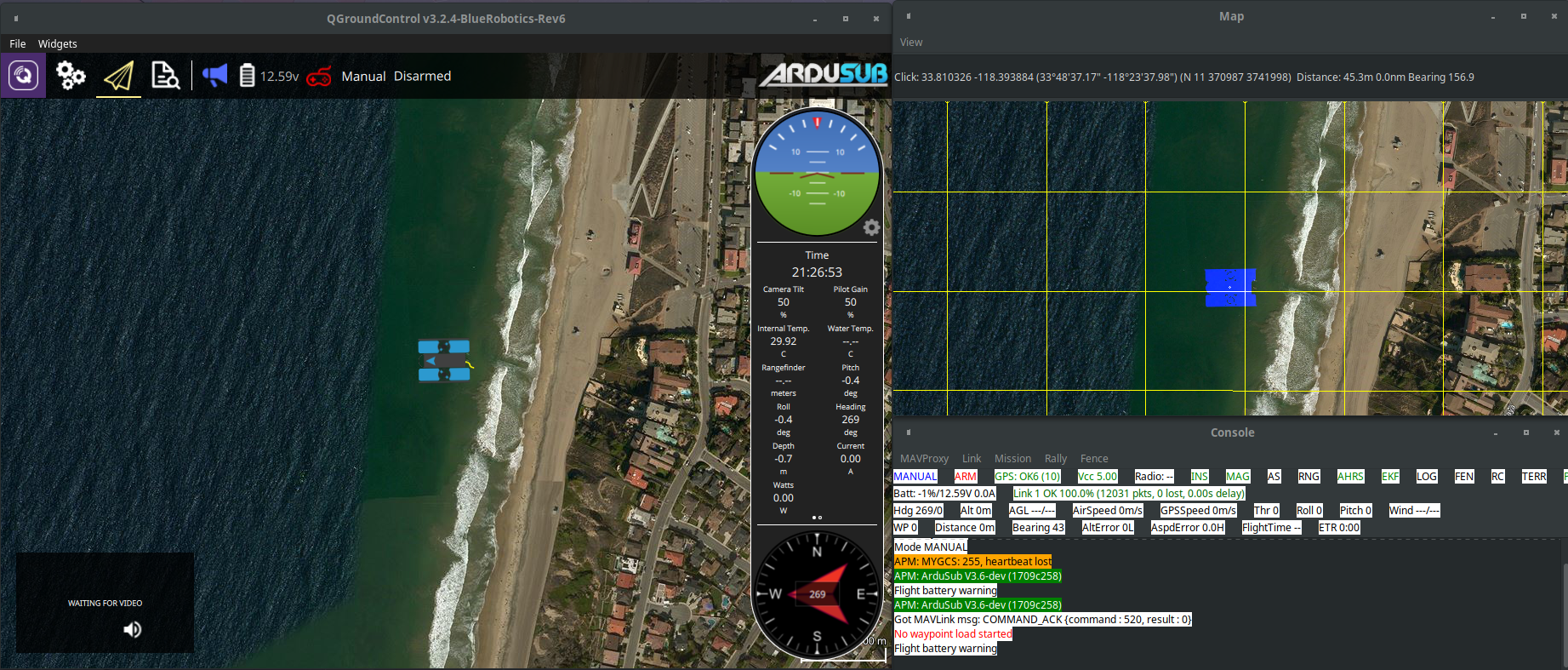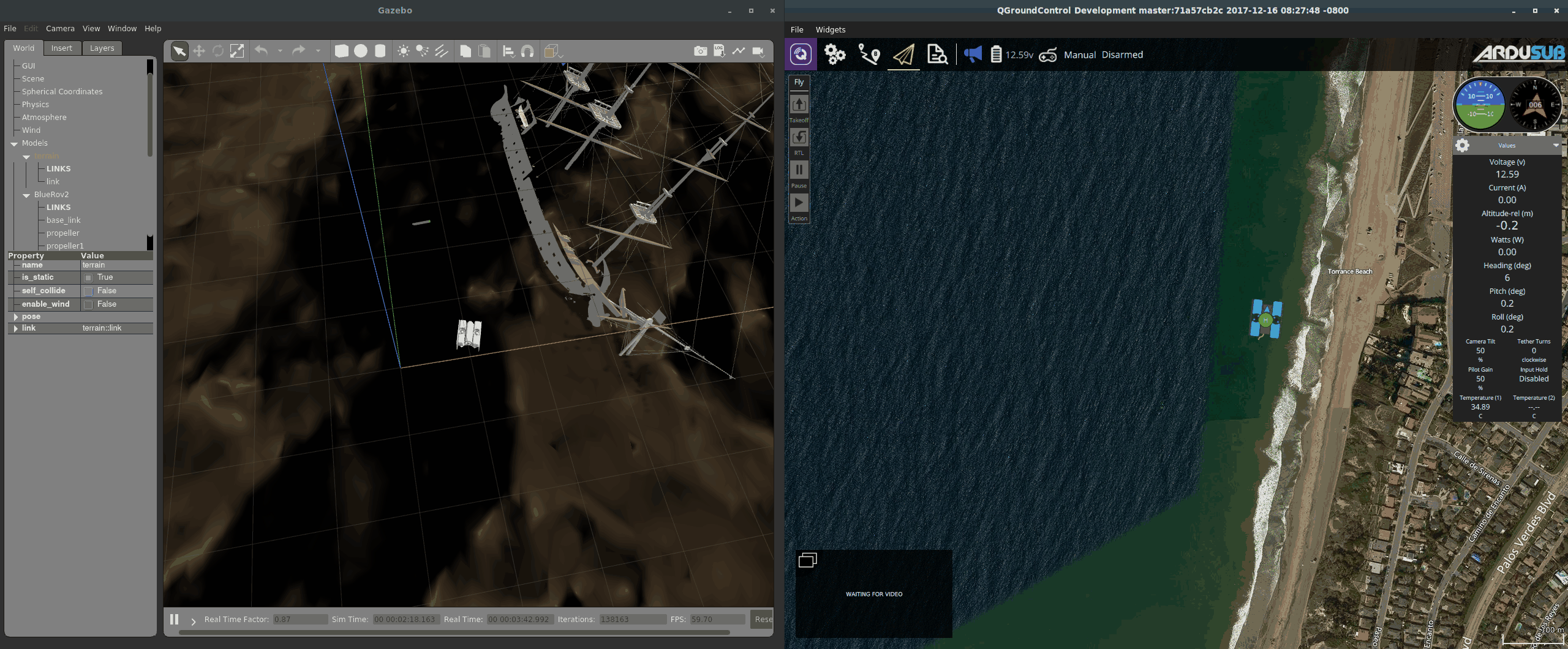S.I.T.L (Software In The Loop)
SITL is a simulator that allows you to run ArduSub without any hardware. It is a build of the autopilot code using an ordinary C++ compiler, giving you a native executable that allows you to test the behaviour of the vehicle.
Installation
To configure and run SITL for the first time in your computer, take a look in Running SITL ArduPilot documentation.
Running ArduSub SITL
This part assumes that you have already set up SITL on your machine. First is necessary to be inside ArduSub folder.
cd ardupilot/ArduSub
To execute SITL with sim_vehicle.py.
sim_vehicle.py -L RATBeach --out=udp:0.0.0.0:14550 --map --console
After that, ArduSub SITL will compile and start to run, you'll be able to connect it with QGroundControl and control it.

For more information about sim_vehicle.py and the options available, check:
sim_vehicle.py --help
Running ArduSub SITL with Gazebo
To run ArduSub SITL with Gazebo, it's necessary to:
- Install Gazebo-7 or Gazebo-8
- Install freebuoyancy_gazebo plugin for buoyancy simulation.
- Install ardupilot_gazebo/add_link plugin for ardupilot-gazebo communication. add_link is a branch that provides actuation over sdf links, after the
git clone, it's necessary to rungit checkout add_link. Run BlueRov2 Gazebo model
Download bluerov_ros_playground
git clone https://github.com/patrickelectric/bluerov_ros_playgroundRun Gazebo model
cd bluerov_ros_playground source gazebo.sh gazebo worlds/underwater.world -u # Start the simulation
Execute ArduPilot SITL
sim_vehicle.py -f gazebo-bluerov2 -L RATBeach --out=udp:0.0.0.0:14550 --console
The console will start to display the output if the connection was successful.

Troubleshooting
- Check if all dependencies are installed via install some required packages.
- If you are running an Unix OS, it's possible also to install missing dependencies with your package manager or
pip.
- If you are running an Unix OS, it's possible also to install missing dependencies with your package manager or
- Be sure that mavproxy is installed with
whereis mavproxy,pip list | grep mavproxy -ior justmavproxy.- If mavproxy is not installed, please run the install packages script (described in step 1 of this troubleshooting) or install the packages manually.
- Check if ArduPilot tools are in your system PATH. It's possible to check with
echo $PATH | grep ardupilot, the result should contains*/ardupilot/Tools/autotestpath.- Check again add some directories to your search path.
- Check if all
ardupilot/modulesfolders are populated.- It's necessary to use git and update/sync all submodules after the first installation, check cloning with the command line.